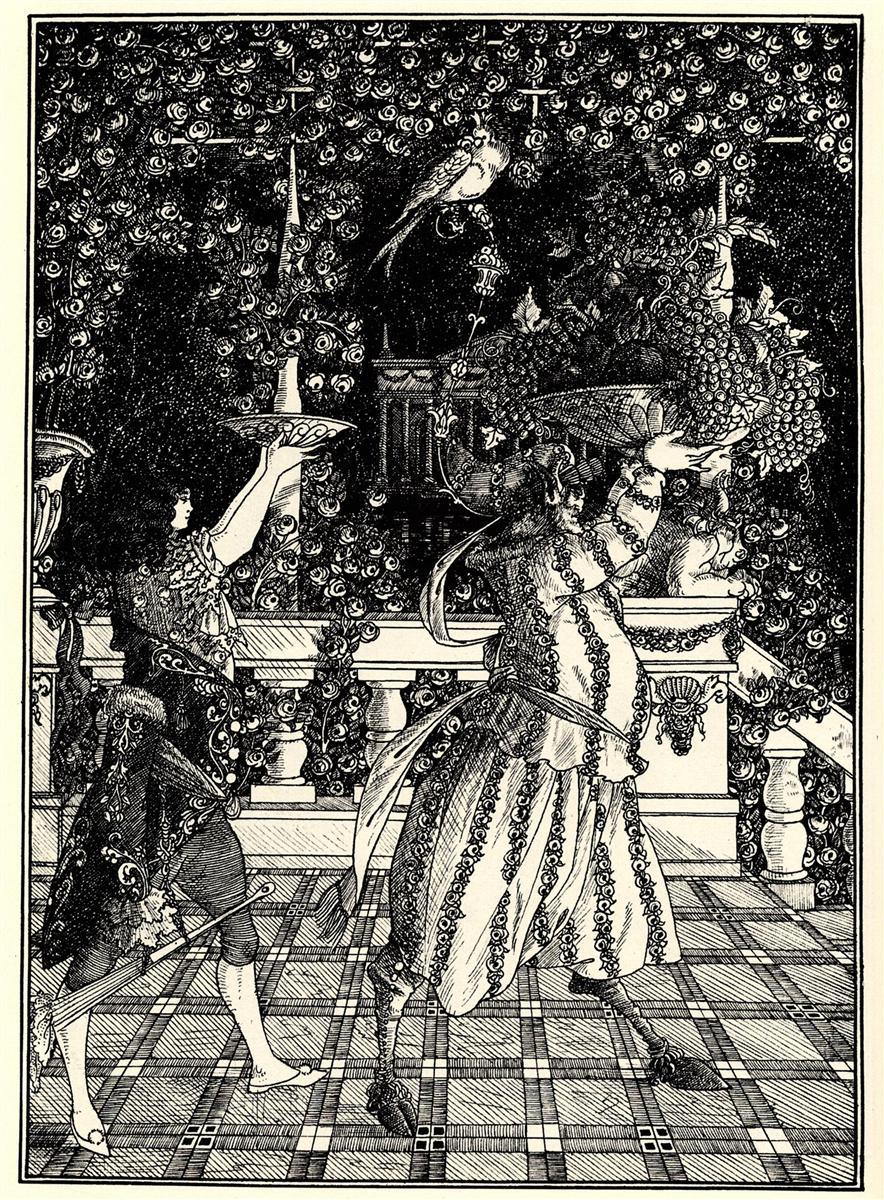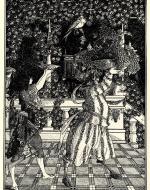Created by Nic Solomon on Sat, 12/07/2024 - 03:01
Description:
This illustration by Aubrey Beardsley depicts two figures carrying opulent bowls of fruit and flowers. There are several notable elements of this drawing, the first being the male figure, who is drawn to resemble a satyr or faun with his goat-like legs and hooves. Satyrs and fauns, associated with the god Pan, were not only seen in Greek and Roman mythology but were also key pagan figures appearing in the decadent movement. Arthur Machen, an arguably decadent author associated with Beardsley, referred to satyrs and fauns in works like The Hill of Dreams, and most notably used Pan as an inconceivable horror in The Great God Pan. While this Beardsley illustration may not be the most horrific, it certainly is unsettling. The abundance and repetition of circular shapes, along with the mass of blackness in the background, causes much of the top half of the picture to blend together, making it difficult to distinguish the outlines of the lavish bowl of fruit, the woman’s hair, and even where the satyr’s clothes start and end. One effect of this is to draw attention to the satyr’s hooved feet, but it also inverts our expectations of an ’indescribable horror.’ Instead of the irregularity of the satyr’s feet being obscured, it seems that the mundane, ordinary parts of this illustration are hidden, and it can make us question what is more horrific: something merely unusual or unnatural, or things we find familiar that have become shrouded in mystique.
Works Cited
Beardsley, Aubrey. "The Fruit Bearers." 1895. WikiArt, September 2017, https://www.wikiart.org/en/aubrey-beardsley/the-fruit-bearers.
Machen, Arthur. The Great God Pan. Arthur Machen: Decadent and Occult Works, edited by Dennis Denisoff, Modern Humanities Research Association, 2018, pp. 43 – 88.
---. The Hill of Dreams. Arthur Machen: Decadent and Occult Works, edited by Dennis Denisoff, Modern Humanities Research Association, 2018, pp. 110 – 250.
Copyright:
Associated Place(s)
Part of Group:
Featured in Exhibit:
Artist:
- Aubrey Beardsley


